Mikasa Hokkai Bon Odori 2026: A Summer Day Trip from Sapporo
Mikasa Hokkai Bon Odori: A Live Music Event
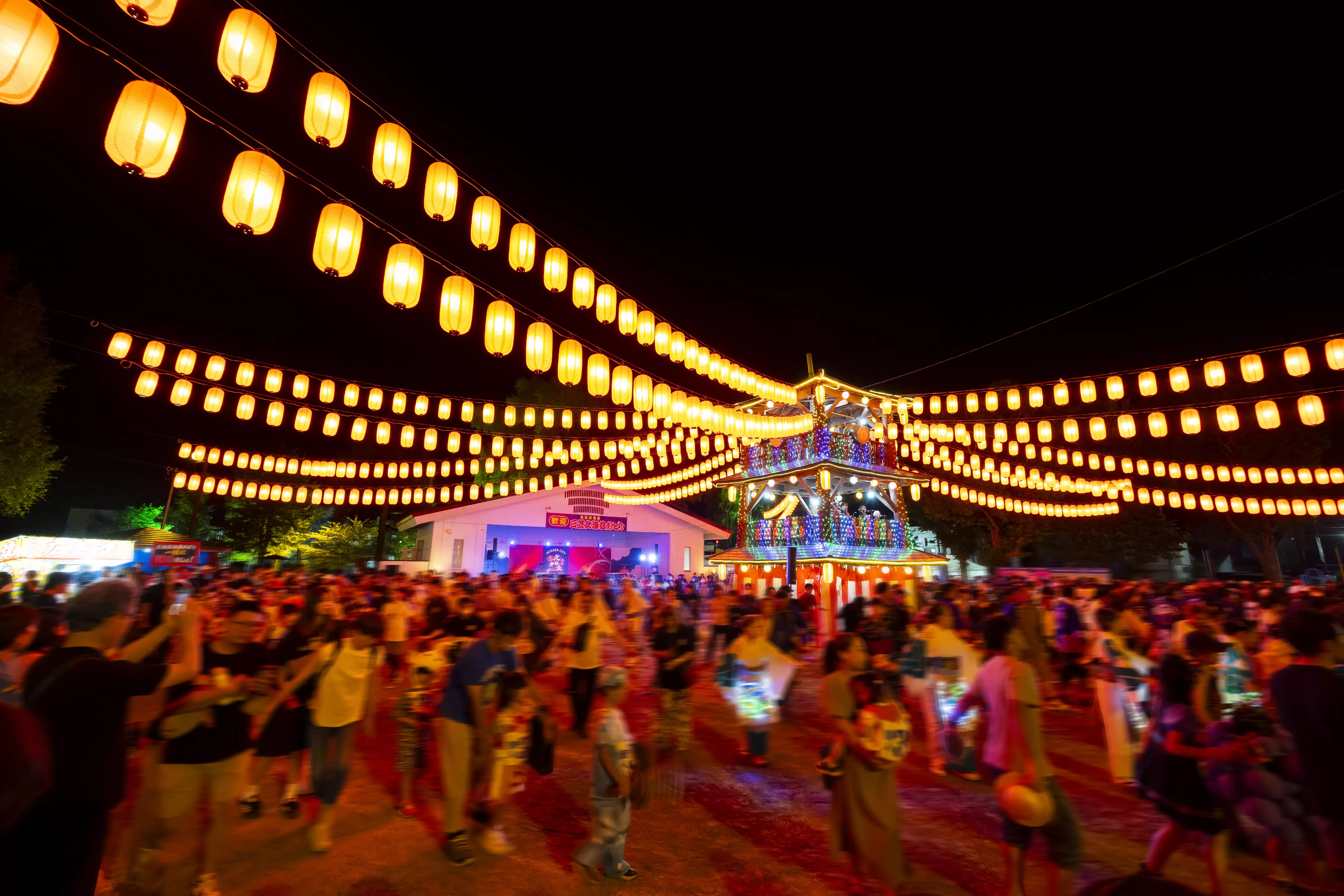
Mikasa City, located in central Hokkaido, is an hour drive away from Sapporo. From Shin-Chitose Airport, the drive takes an hour and a half. The city, which can be used as a hub for sightseeing in the area, is easy to access, and perfect as a day trip destination. Mikasa has a history of hosting a Bon odori event, accompanied by live music.
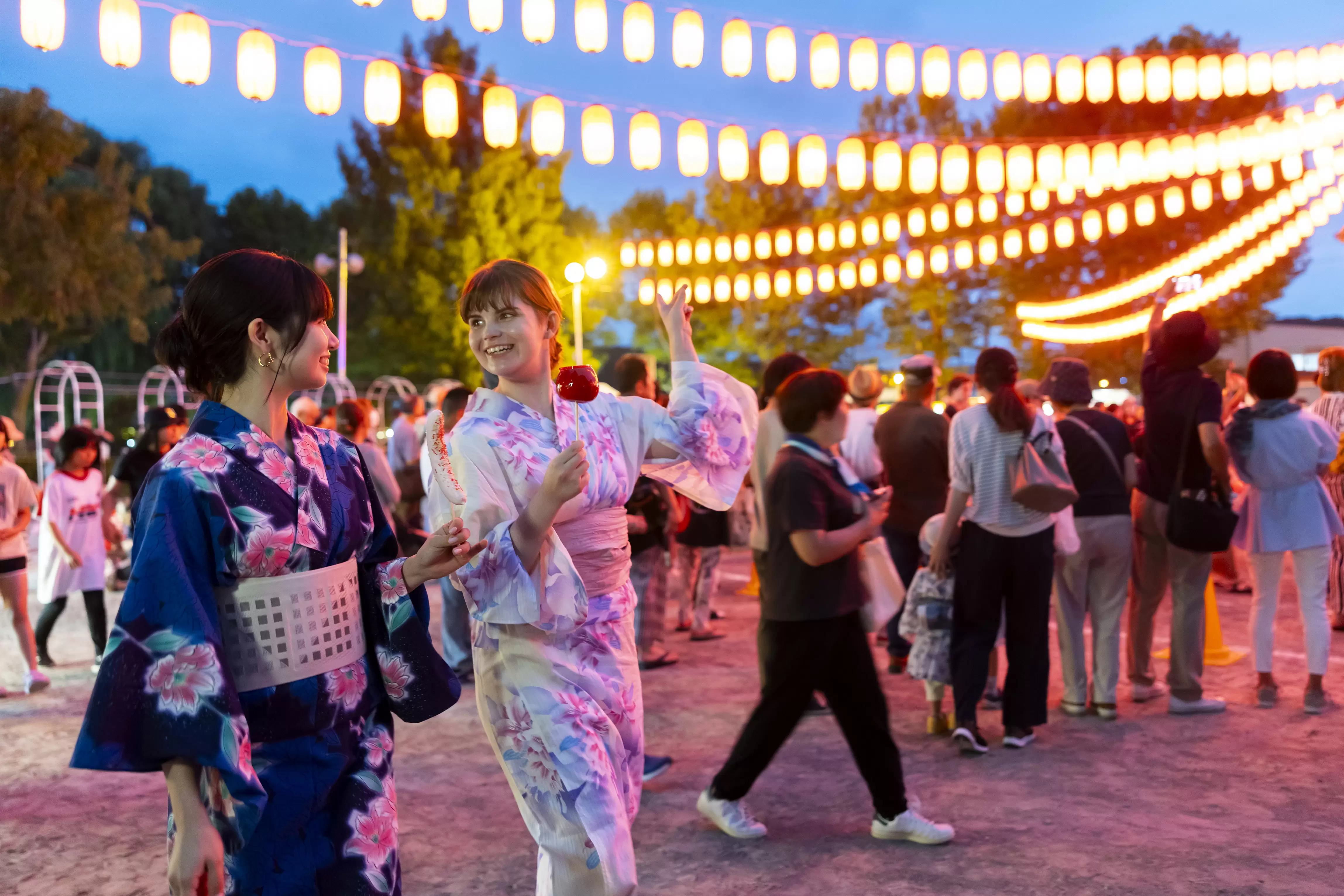
Bon odori derives from a Buddhist ritual to send off the spirit of our ancestors. It has become a summertime attraction, and a place for community interaction, as well. The unique development of Mikasa Hokkai Bon Odori was also influenced by the folk culture of coal miners.
It is held at Mikasa Chuo Park. Visitors from out of town, along with the locals, annually gather at the event to join the circle of traditional dancing accompanied by live music.
This article is about the highlights of Mikasa Hokkai Bon Odori, and the appeals of the host city.
History, Highlights, and Event Period
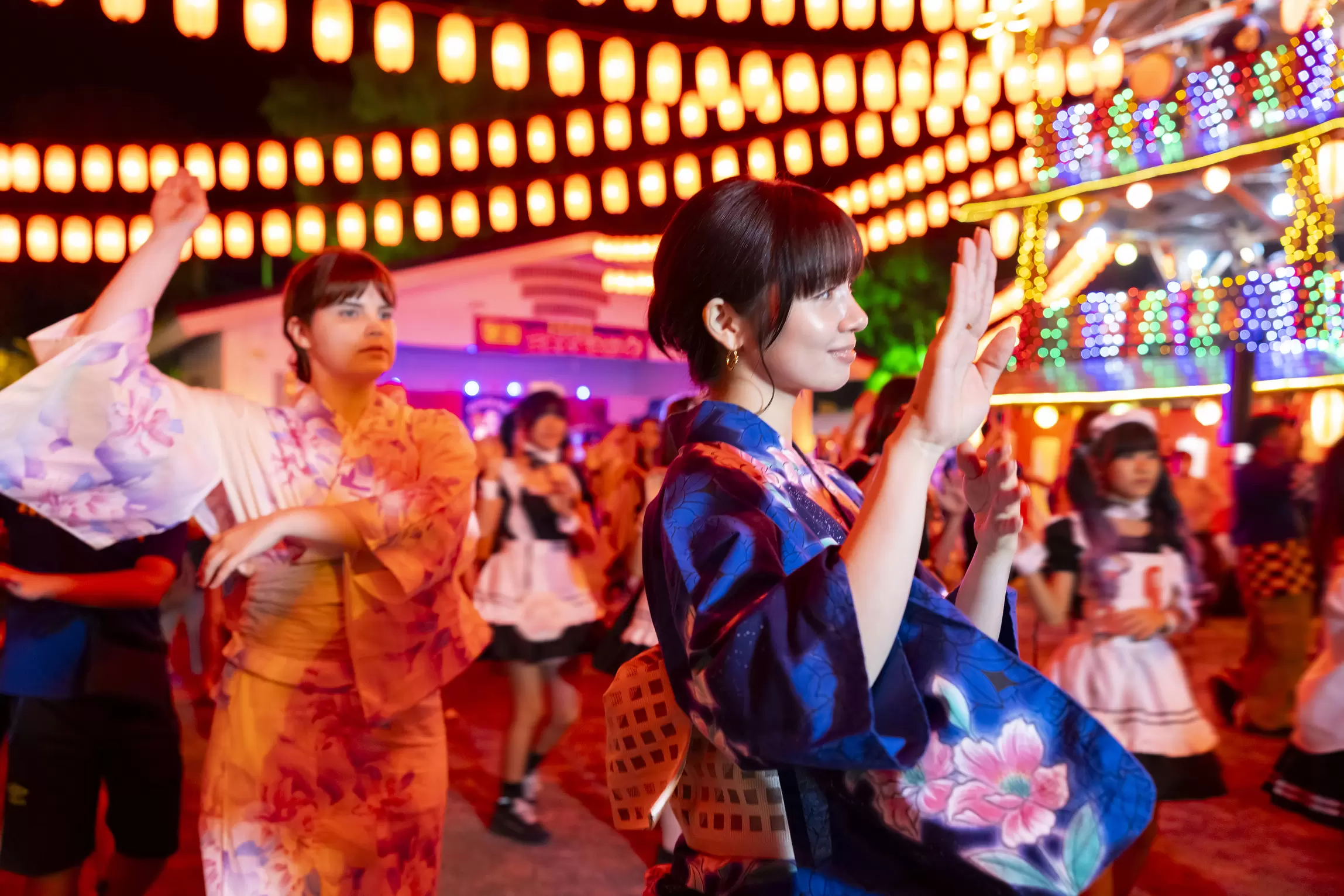
Mikasa City is known as the birthplace of Hokkai Bon-uta, a Japanese folk song. The history of the local coal mine is related to the song.
For 110 years from 1879 to 1989, Mikasa prospered as a coal town. People gathered from all over Japan to work at the mine. Betcho-bushi, a folk song sung at the annual Bon odori, supported the hard work of the miners.
After WWII, Kozan Imai, known as the godfather of Hokkaido folk songs, arranged the music and lyrics of Betcho-bushi and released a song titled Hokkai Tanko-bushi. It was later recorded as Hokkai Bon-uta, which became famous all over Japan, and Mikasa was widely acknowledged as its place of origin.
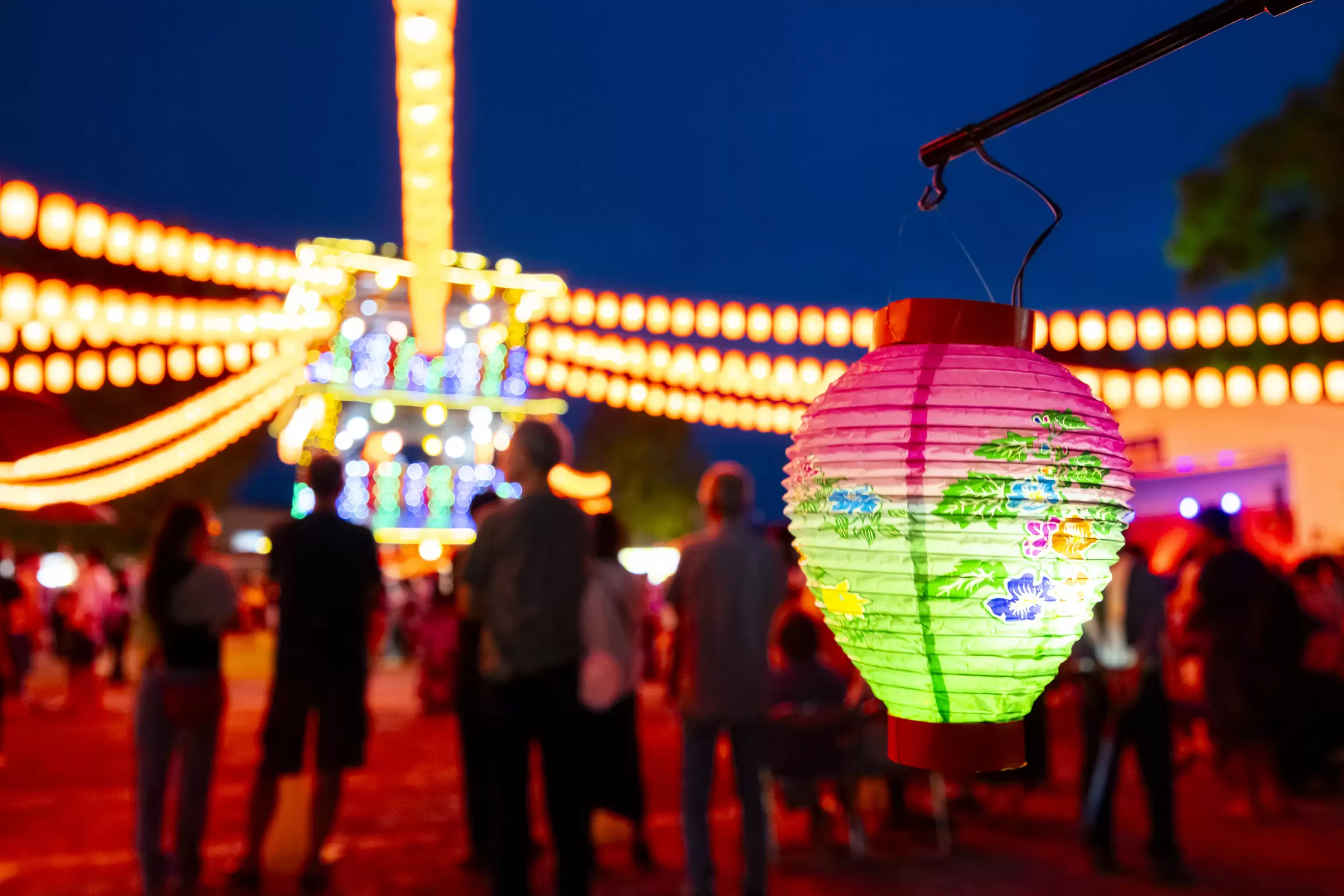
The current event is held over 3 days, from August 13th to 15th. Various events, such as a coal-carrying race, summer fireworks display, and a romantic lantern procession are scheduled, along with the traditional Bon odori.

The yagura, a three layered structure, is about 8 meters in height, with the singers and musicians performing from the top floor. There is a rental yukata service at Mikasa Civic Hall, located next to the park. As of August 2025, the charge is 1,500 yen. Those who have just happened to drop by will still be able to enjoy the atmosphere.
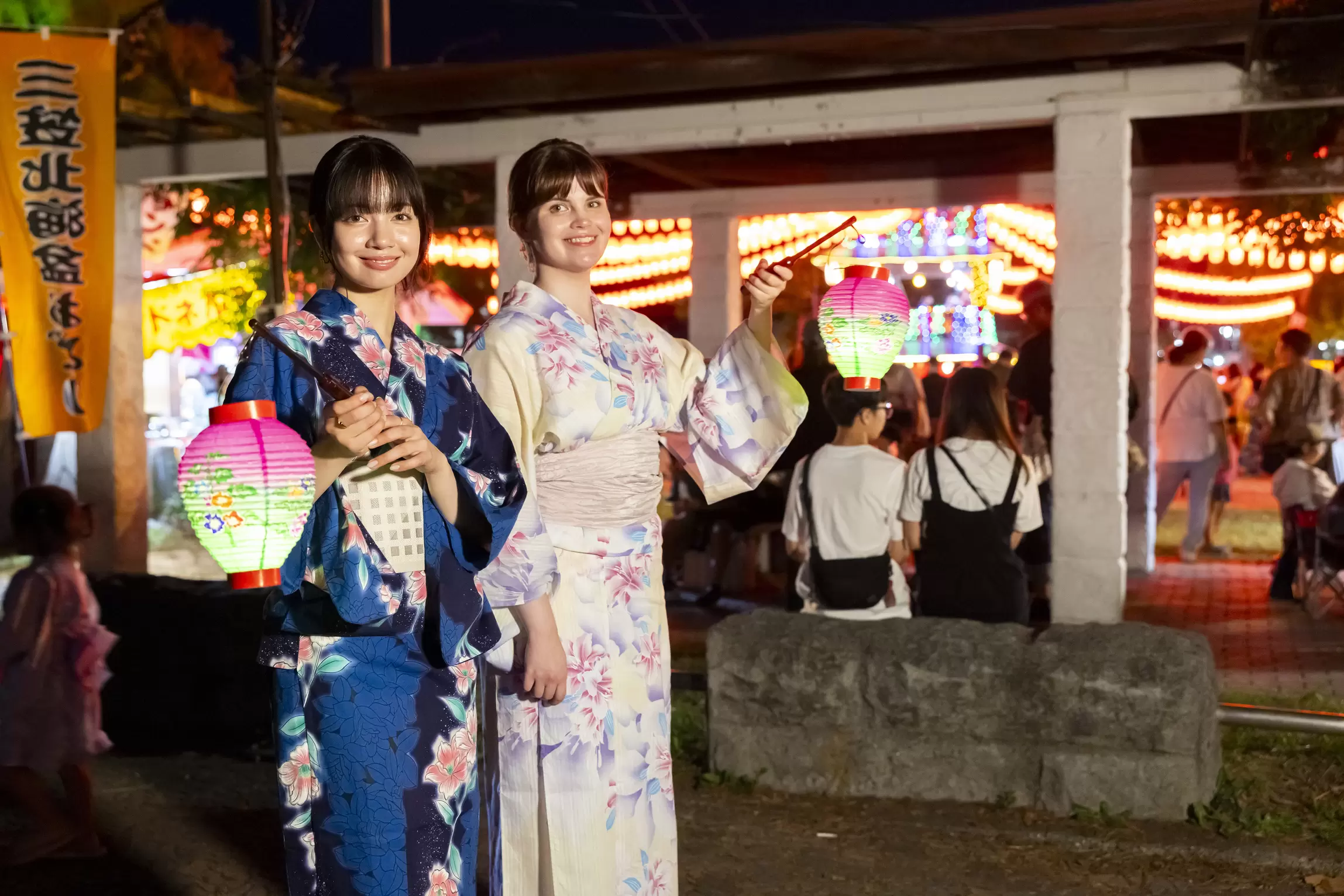
Join the Locals and Dance
During the daytime, unique events such as a coal-carrying race, imitation show, and an idol performance will be held. The music for the Bon odori starts around 17:00.
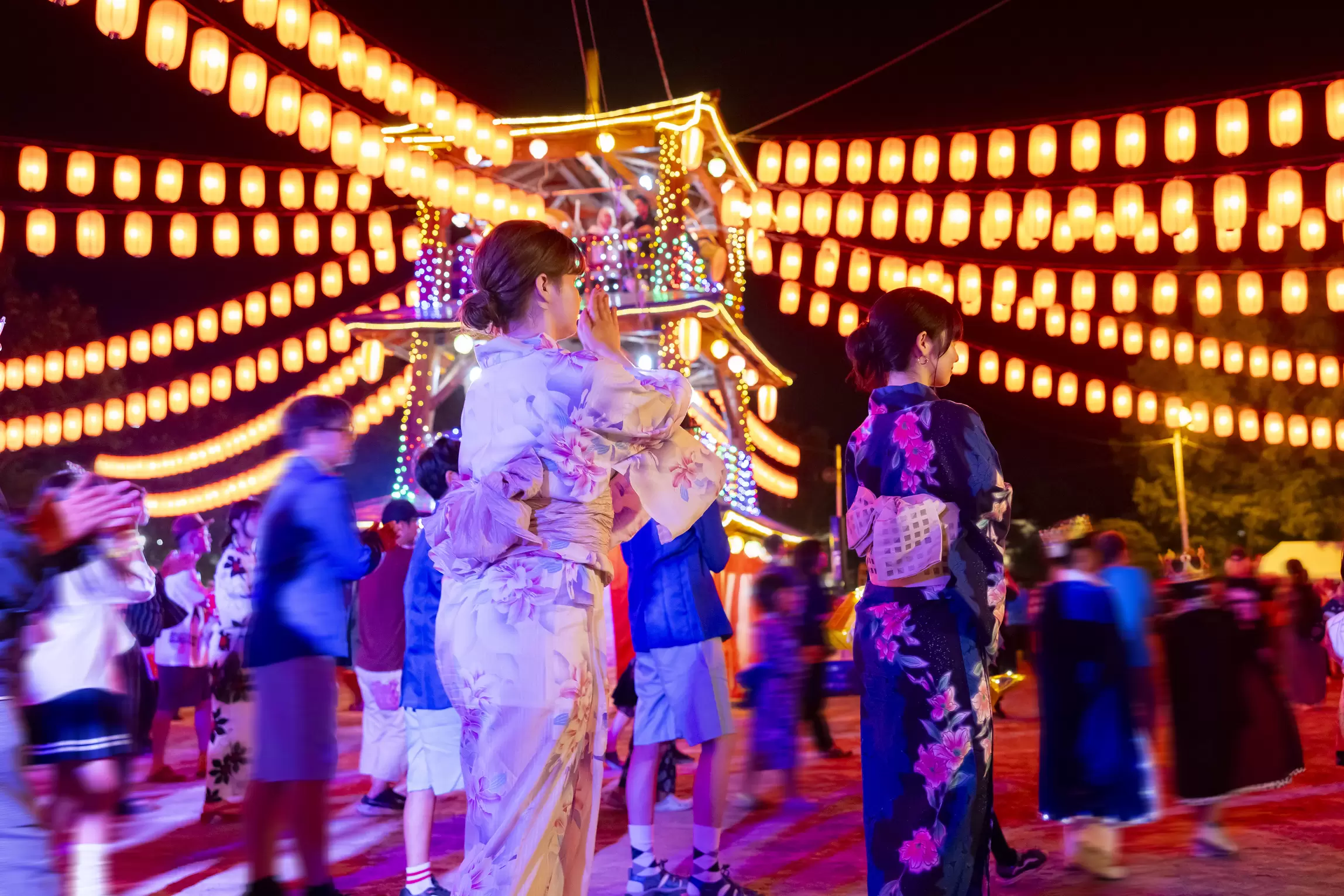
The three-layered, 8-meter-tall yagura will be decorated with lanterns, creating a dreamy scene at sunset. The Hokkai Bon-uta singer, along with musicians playing the Japanese flute and drum, will be providing the music with powerful song and rhythm resonating continuously throughout the venue.
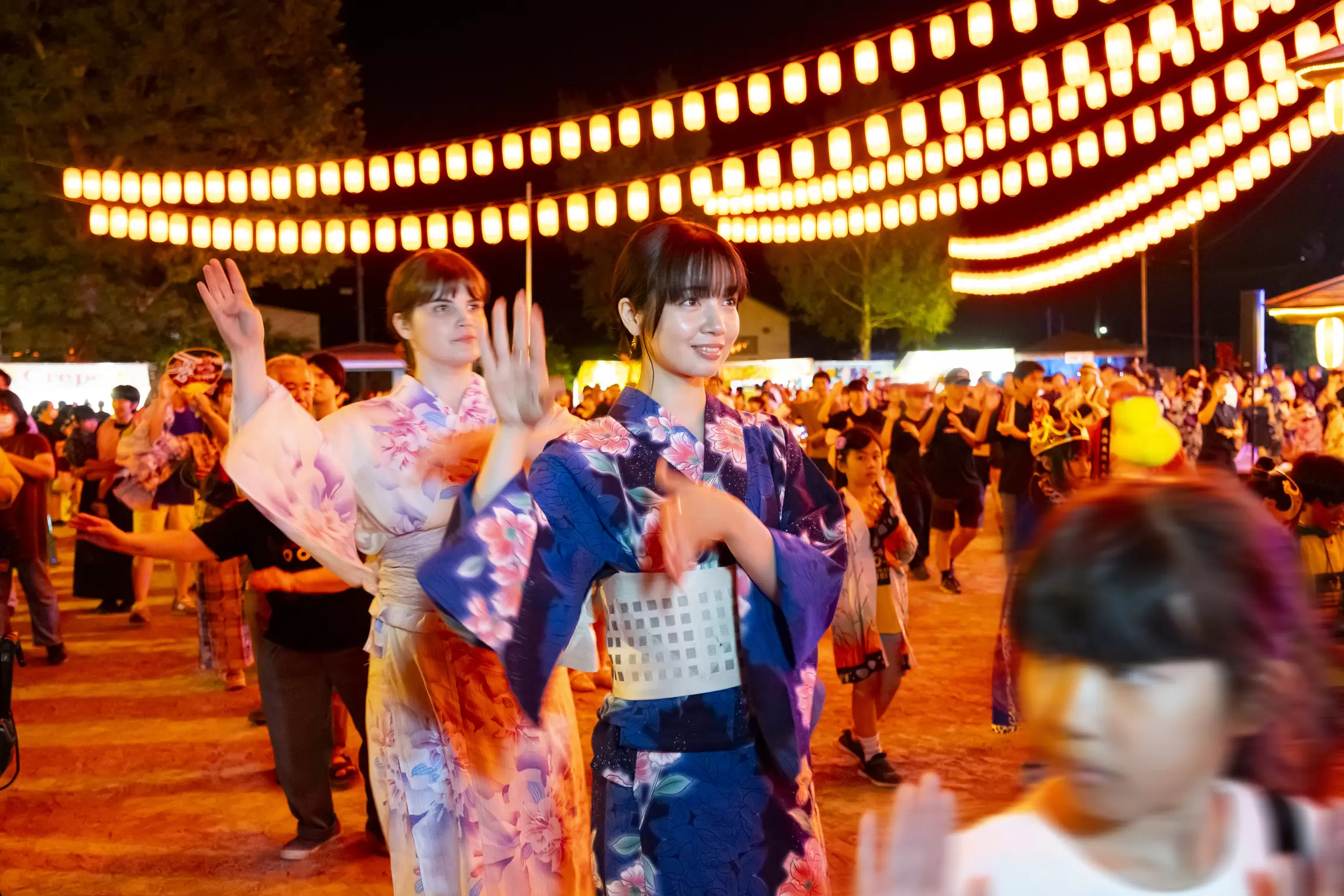
While some people may be overwhelmed by the atmosphere, join the circle of locals who are dancing happily with smiles, and you'll find yourself moving along to their movements.
The singer's strong voice, accentuated by the drum, and the merry air created by the locals, will make a wonderful memory.
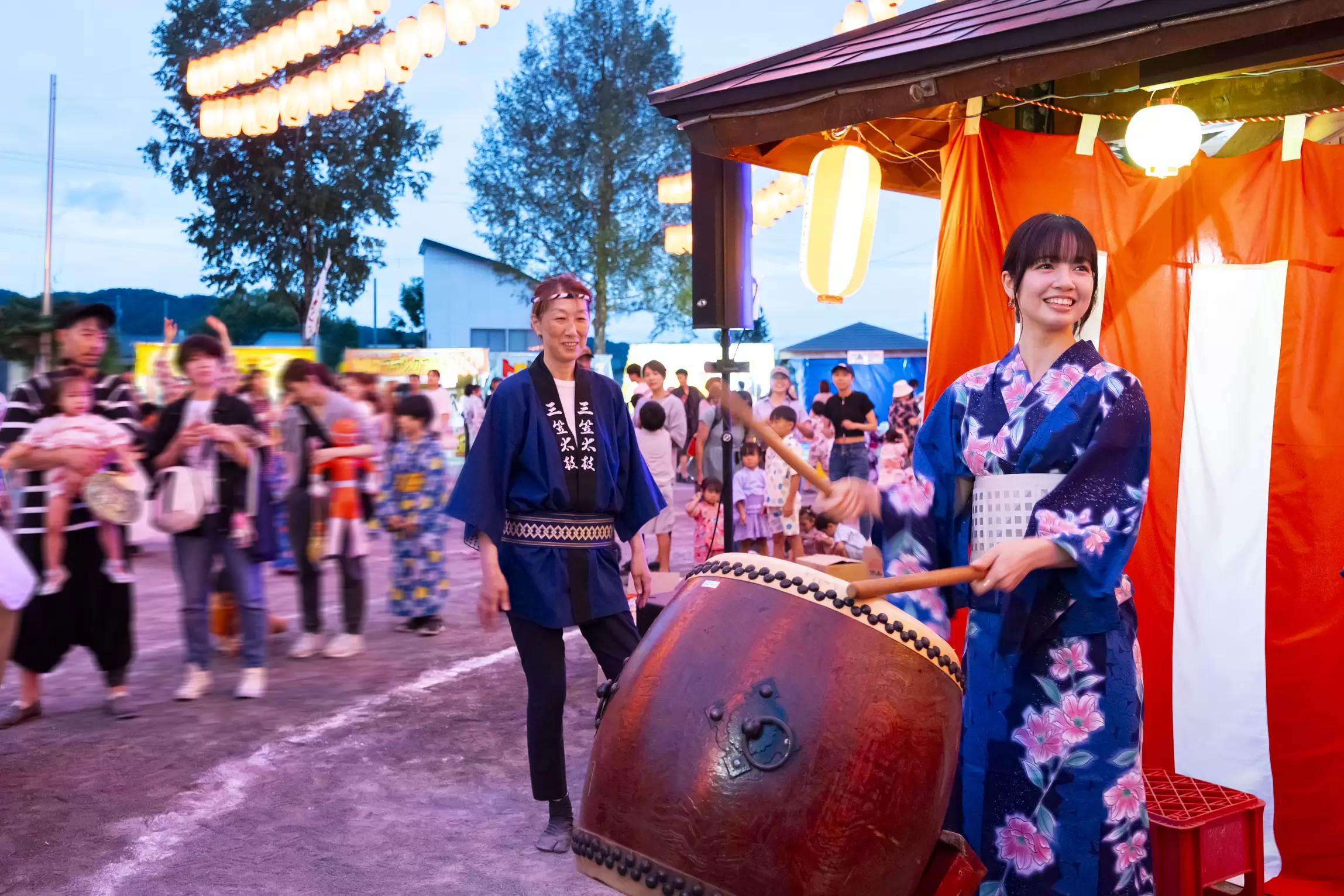
There are various Bon odori programs, such as the adorable children's Bon odori, the incredibly popular children's costume Bon odori, and Mikasa Hokkai Bon Odori, which is for people of all ages. Participants can take a break between dances or join a program they prefer, enjoying the event at their own pace.
Food Stalls
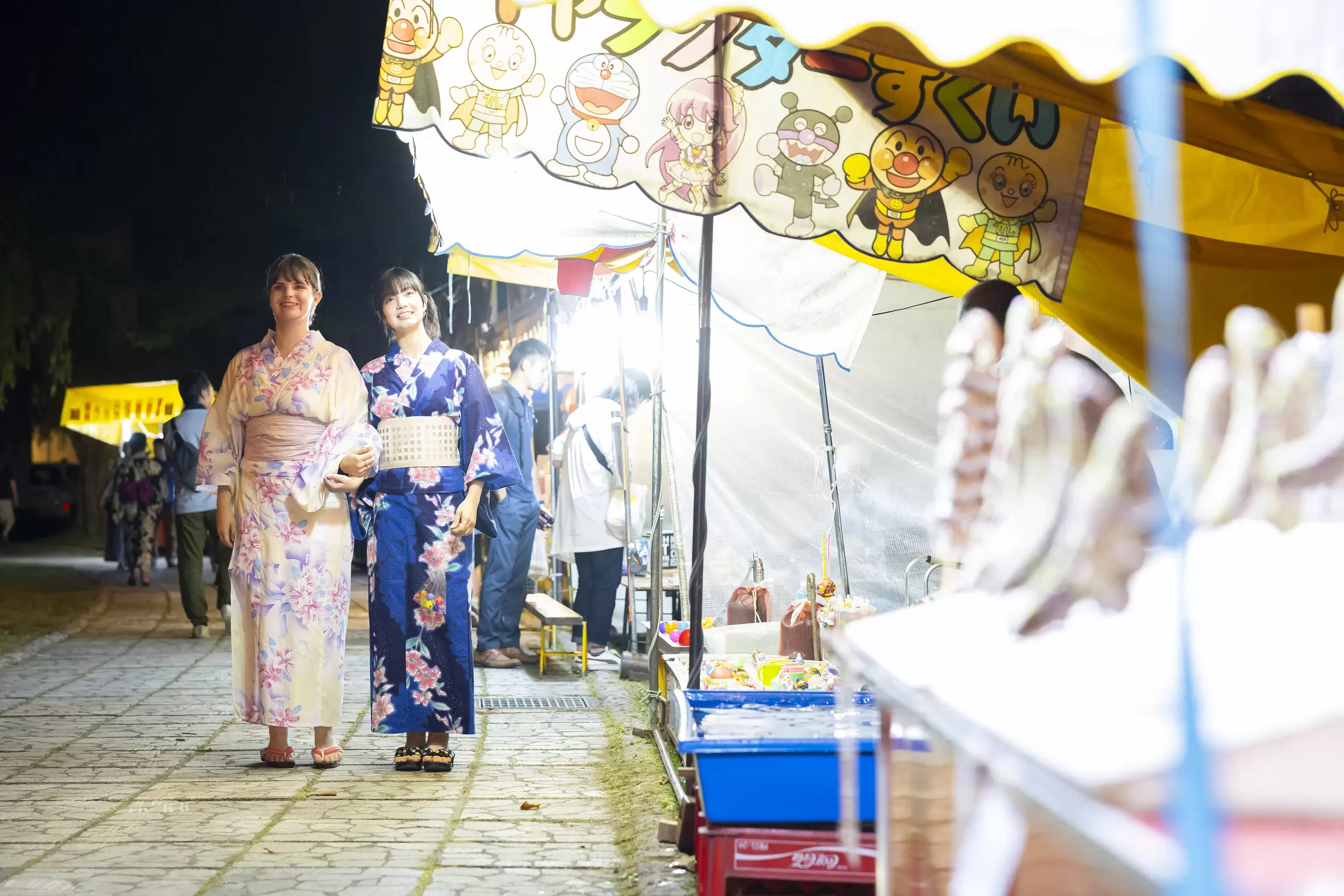
Mikasa Chuo Park will be divided into west and east areas, with the yagura located at the former, and food stalls at the latter. There will be about 50 booths, providing fragrant and colorful looking dishes to brighten the festive summer night.
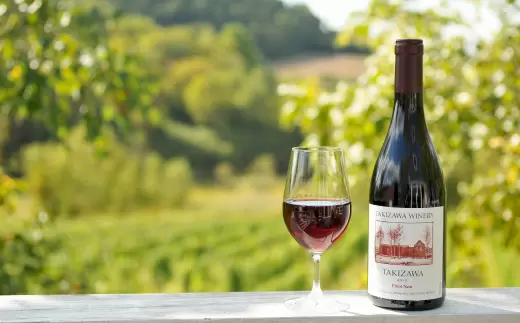
Along with staple dishes such as yakisoba, cotton candy, and churros, popular local eateries, including Mikasa Wine, will also be present.
While the wine can be purchased at Roadside Station Mikasa and liquor shops, they will be specially on sale at the event. The grapes are cultivated from the hilly area of Mikasa, nurtured by the region's coal-mining history and soil that contains ammonite fossils from tens of millions year ago.
On the day of the event, wine samplings will be available before purchase.
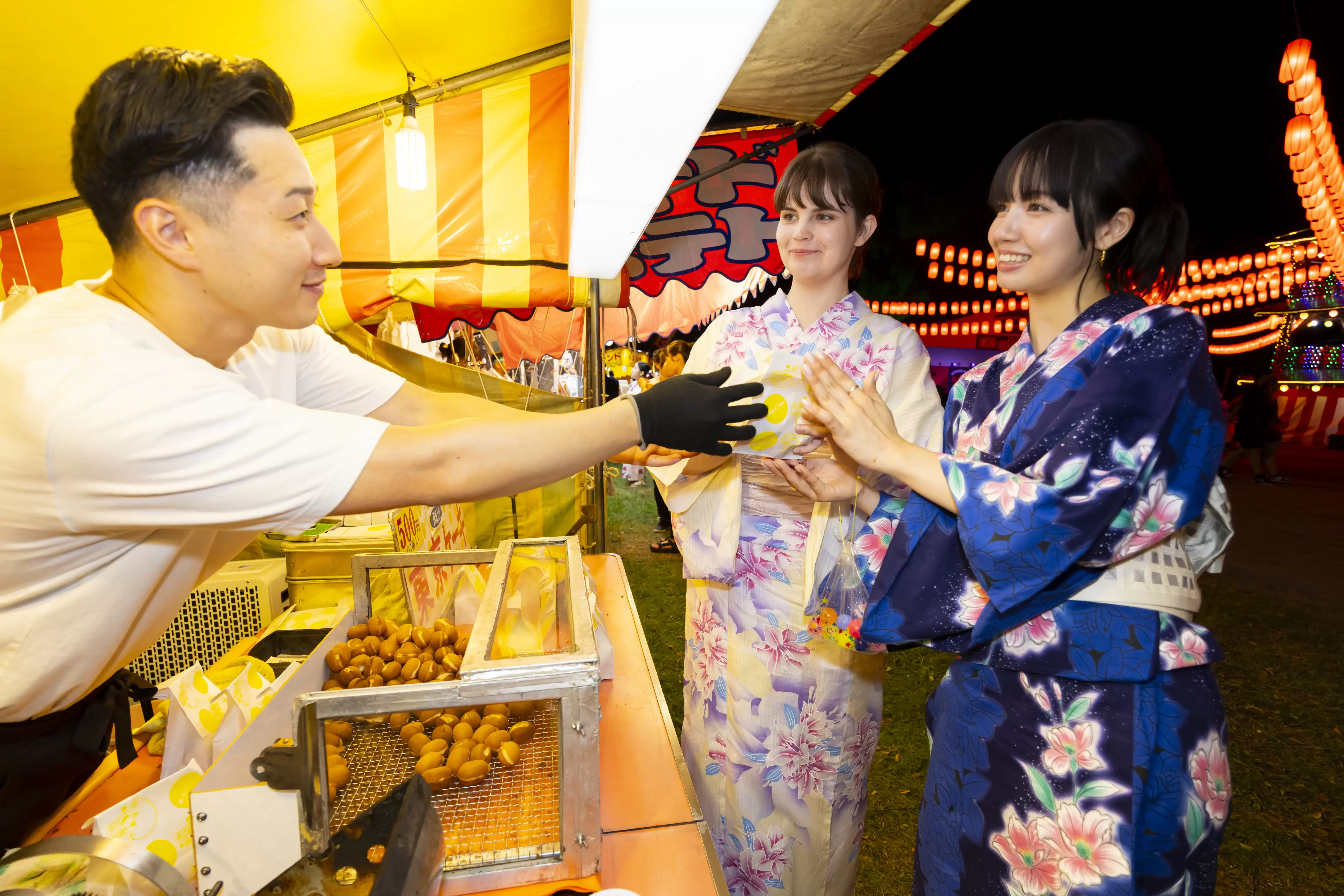
The following is a list of popular local eateries that will have food stalls at the event. It'd also be fun to visit their physical stores after the event.
2 Beans Coffee: A Mobile Coffee Stand
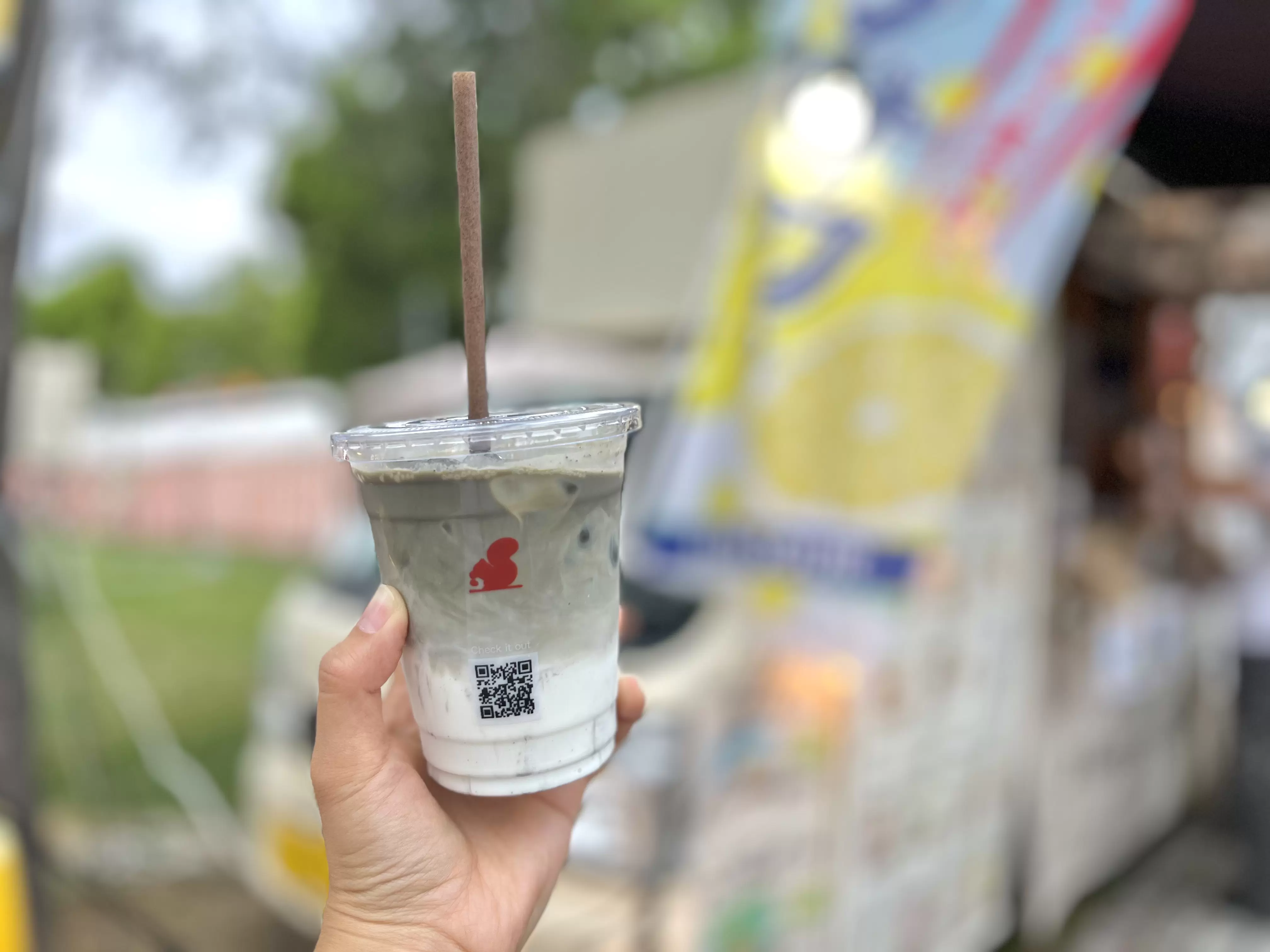
2 Beans Coffee, established in 2019 and based in Mikasa City, is a food truck serving freshly brewed coffee.
The most popular menu at the event is the Mikasa latte, made in the image of a coal mine. The black and white drink is quite picturesque. It is stylish, and perfect for those who want to taste something delicious during the trip.
Rire-Sourire, a specialty store handling financier, is an affiliated eatery located in Mikasa. They serve confections which are ideal as souvenirs, made from Hokkaido products.
[place_master_id=17140 show_photos embed]
[place_master_id=17141 show_photos embed]
Namae ga Nai Pan-ya: Popular With the Kids!
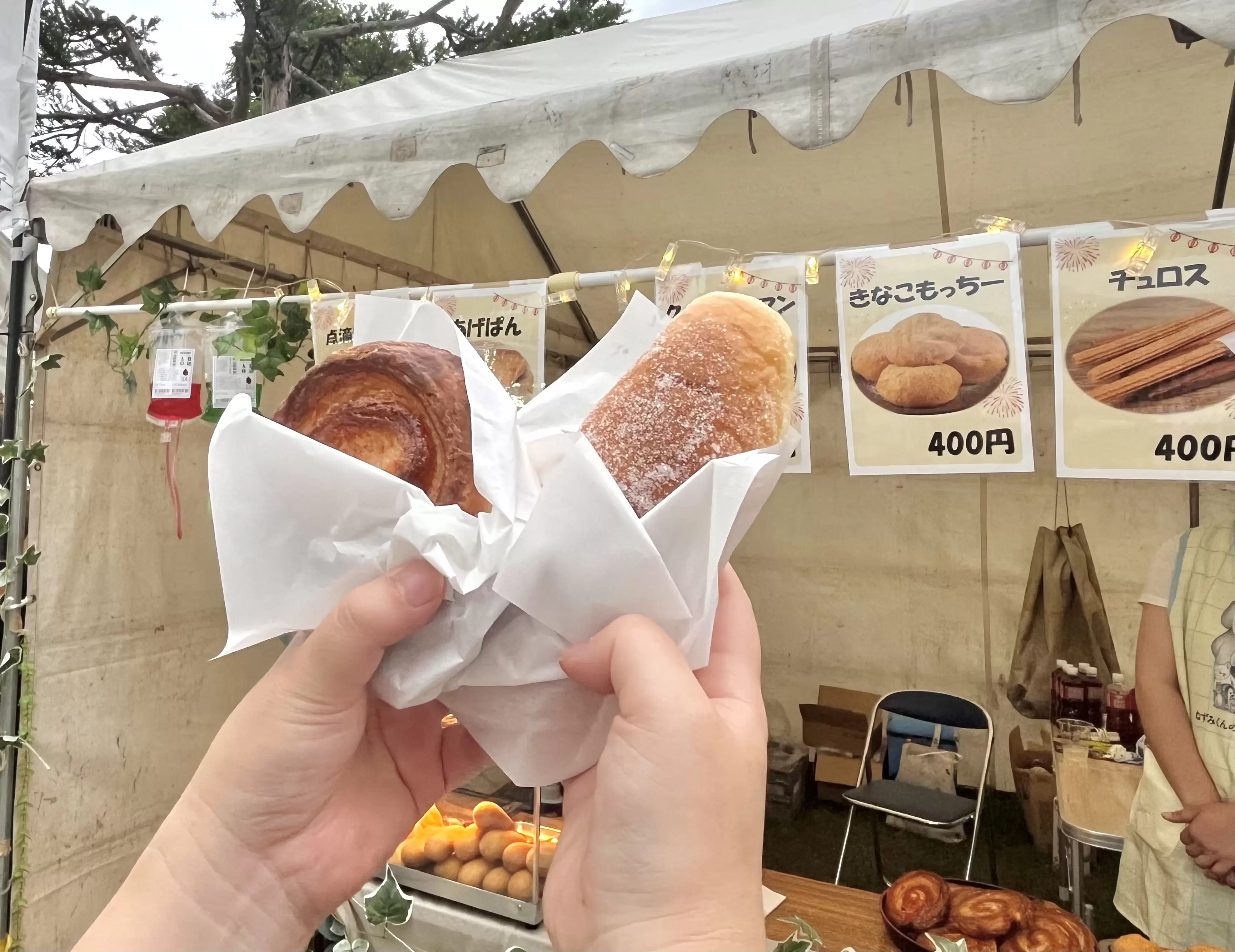
Namae ga Nai Pan-ya (A Bakery with No Name) started as a store where children can buy bread with their allowance. All products, with the exception of sandwich bread, cost no more than 200 yen.
Fried bread, Kouign-amann, along with seasonal vegetable buns filled with zunda or pumpkin paste, are the popular products. This is a bakery for people of all ages.
The breads are freshly baked with Hokkaido wheat. Be sure to check them as a snack, or a souvenir.
[place_master_id=17142 show_photos embed]
Omusubi Kororin: A Specialty Shop Using Local Rice
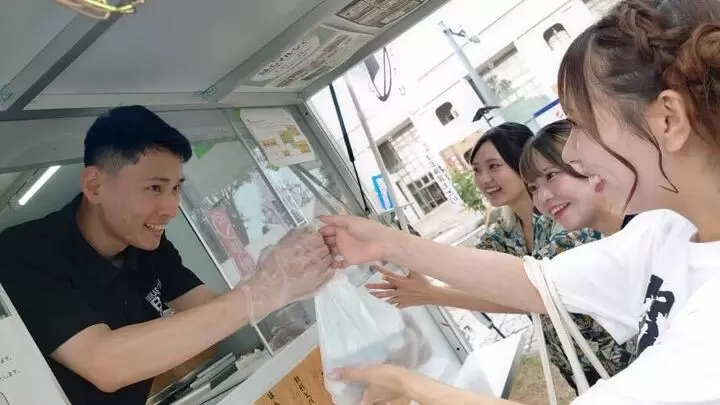
Omusubi Kororin, which opened in 2025, is a specialty store offering onigiri (omusubi) made with Mikasa rice.
They serve periodic menus such as autumn salmon and butter omusubi, or seaweed rice and salted mackerel omusubi, along with seasonal miso soups, which can be purchased as a set menu.
This local cuisine is ideal for a snack or breakfast. Omusubi Kororin runs as a food truck with its location and business hours posted on their Instagram account.
[place_master_id=17143 show_photos embed]
Amaimono Club: Freshly Prepared Homemade Treats
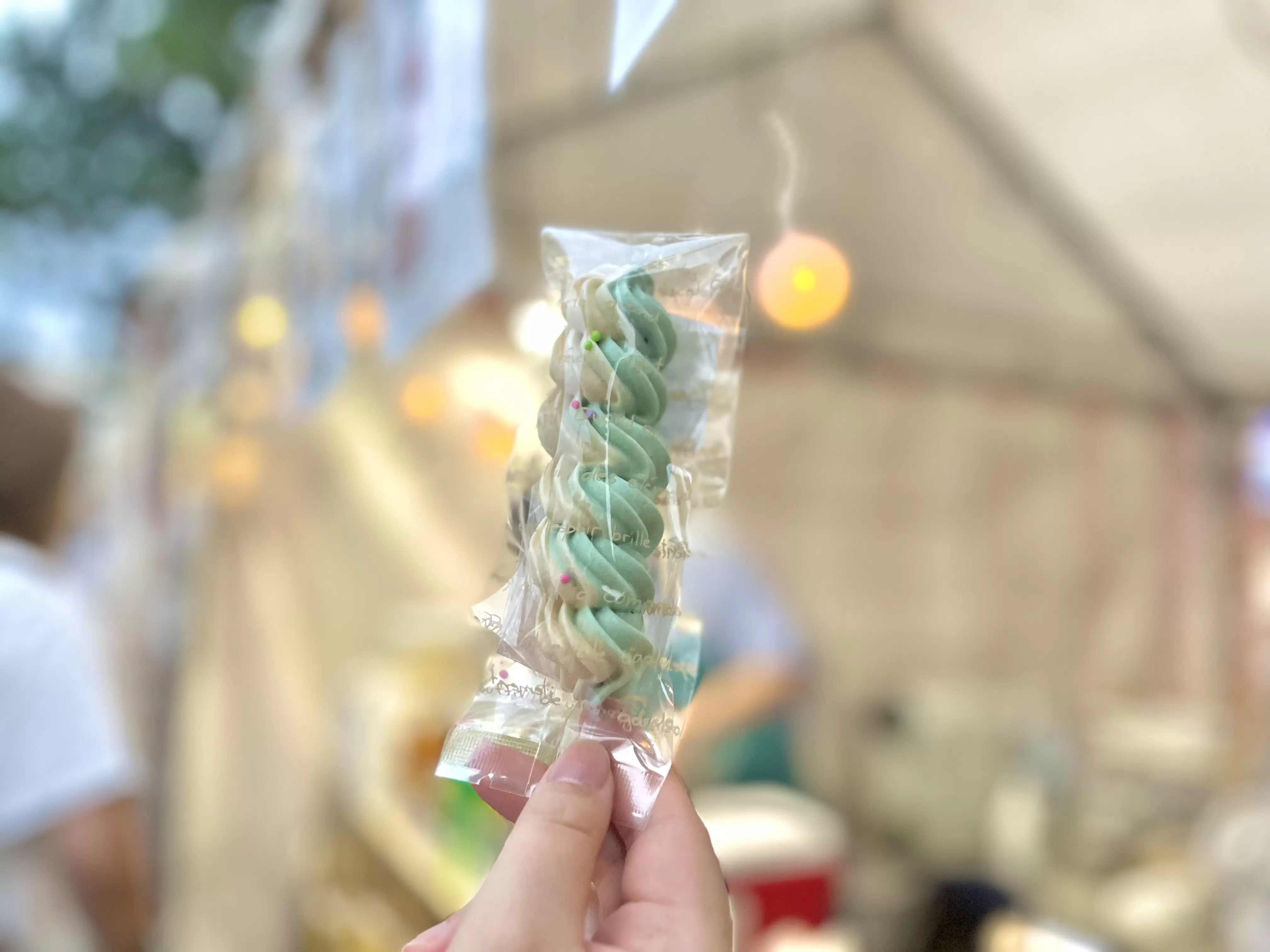
Amaimono Club, which opened in 2021, is managed by the patissier Sota Tanaka. The colorful, cute meringue cookies, which have a soft, melting texture, are popular items sold at the event.
Their physical store also offers kamayaki pudding, made with Hokkaido products, and financier, which is perfect for a souvenir. In the daytime, Amaimono Club serves snacks, coffee and tea, while serving liquor and light meals at night.
[place_master_id=17165 show_photos embed]
Visit Ichikishiri Shrine Before the Festivities
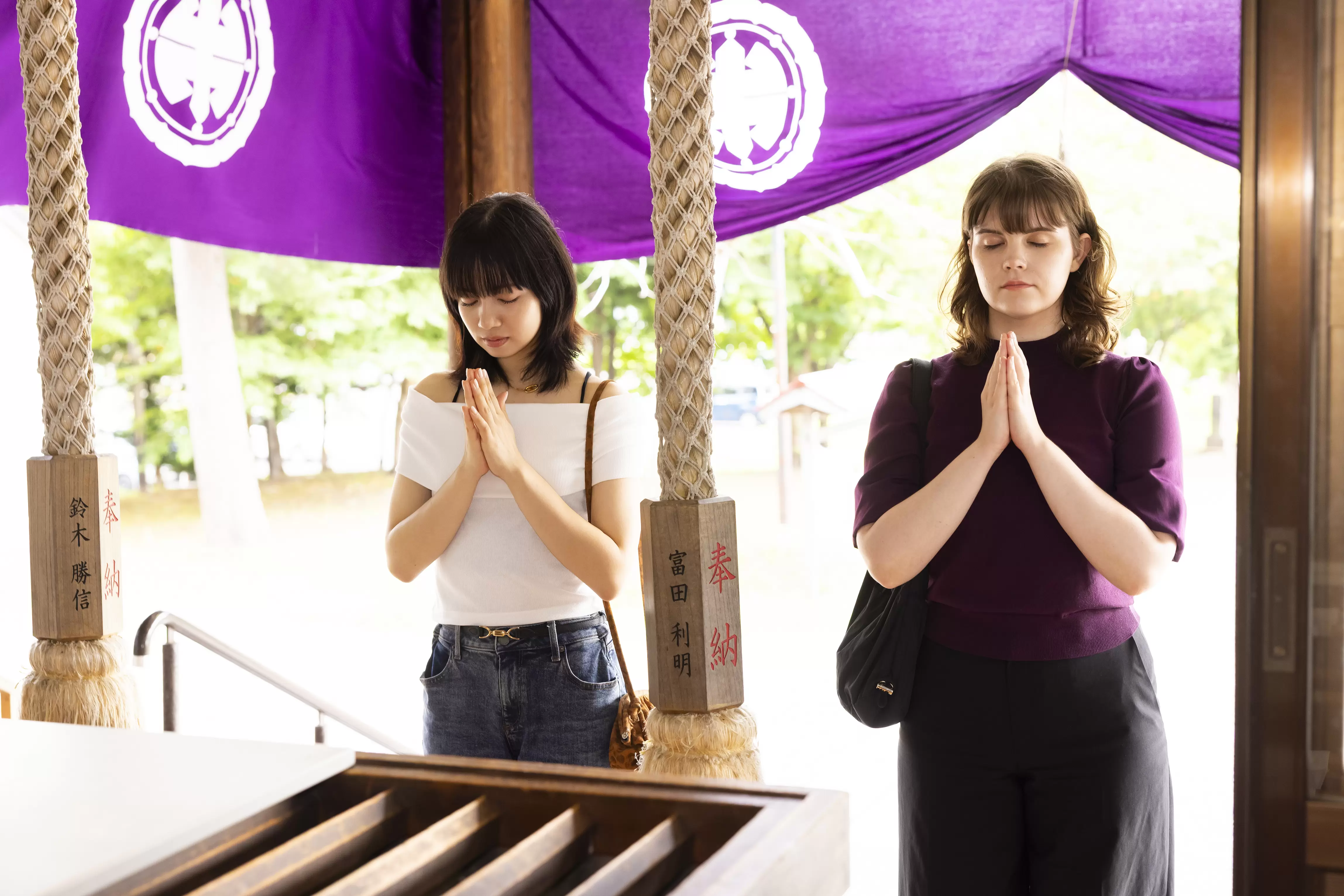
From Mikasa Chuo park, it is a 15 minute walk to Ichikishiri Shrine. Ichikishiri is the former place name for Mikasa.
In the Meiji Period, it started from a small shrine in the pioneer days of Hokkaido, and developed as the guardian deity of the area. The main building and the torii gate stand out against the backdrop of lush trees and flowers.
A sacred forest, a place to welcome the deities, stands behind the shrine. It is famous as a forest where owls raise their chicks, so if the time is right, visitors may be able to enjoy birdwatching.
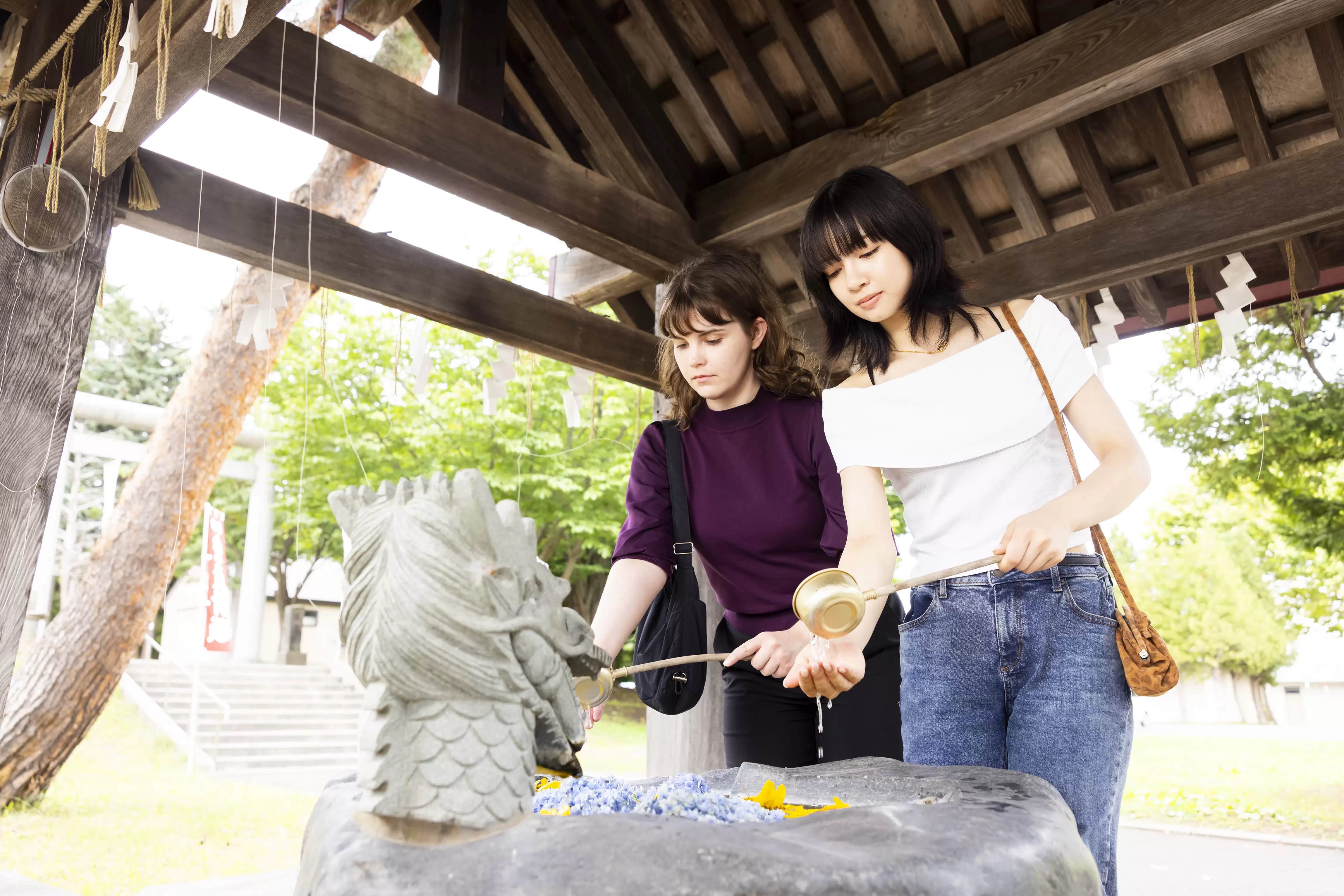
Before the worship, be sure to follow the procedure mentioned below, at the chozu-ya.
- 1. Use the water ladle with your right hand and wash your left hand.
2. Wash your right hand with the ladle in the left.
3. Use the ladle with your right hand again, pour some water into your left hand, and rinse your mouth.
4. Wash your left hand one more time and cleanse the ladle handle.
During certain seasons, flowers may be floating on the water basin, which is a sight to behold.
Two bows, two claps, and one bow is the formal way to worship. The procedure consists of two deep bows, two loud hand claps in front of the chest, a prayer with eyes closed, and another deep bow at the end.
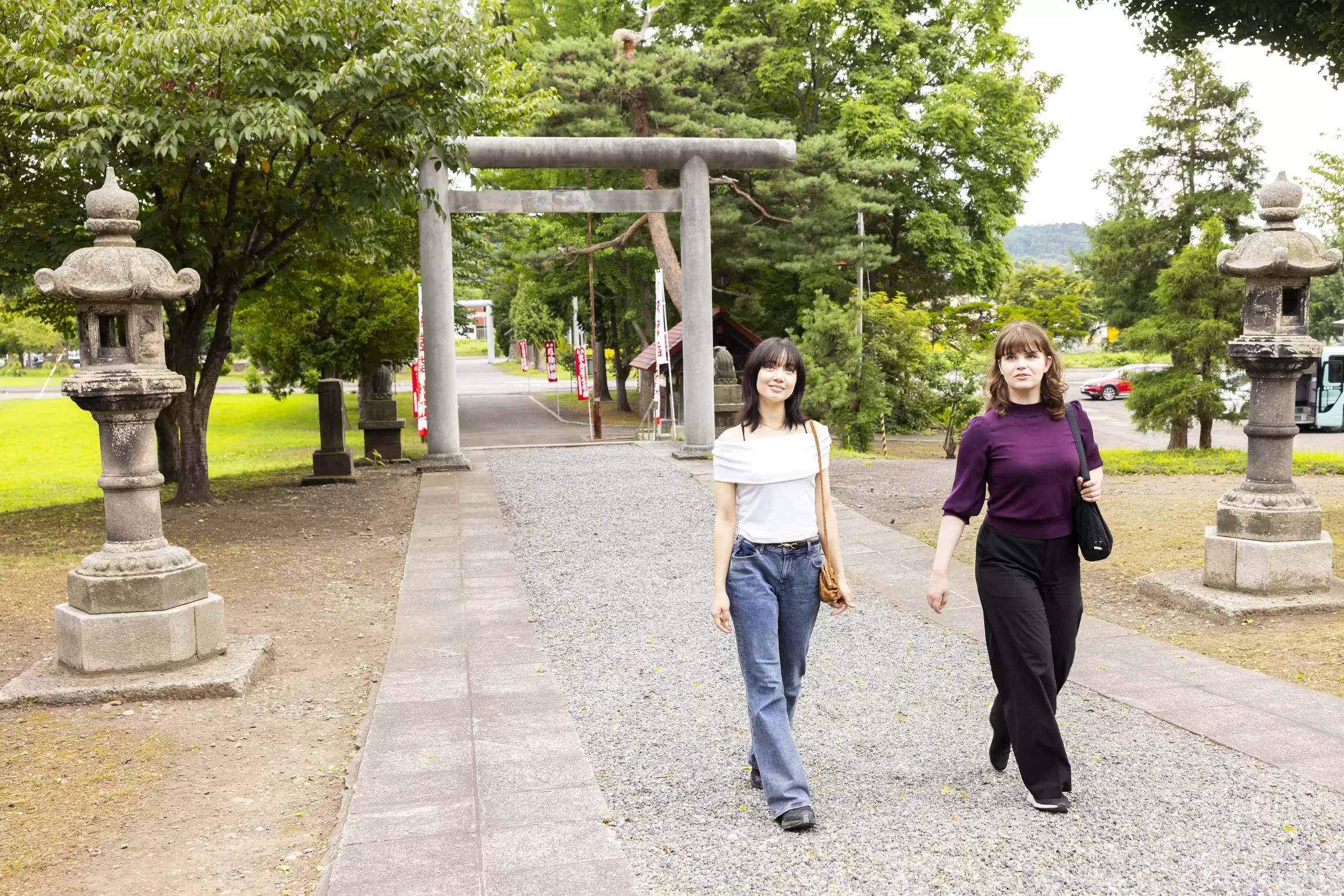
A visit to the shrine will surely cleanse and calm one's mind. Don't forget to drop by before joining the Bon odori.
Mikasa City Museum: Experience a World from 100 Million Years Ago
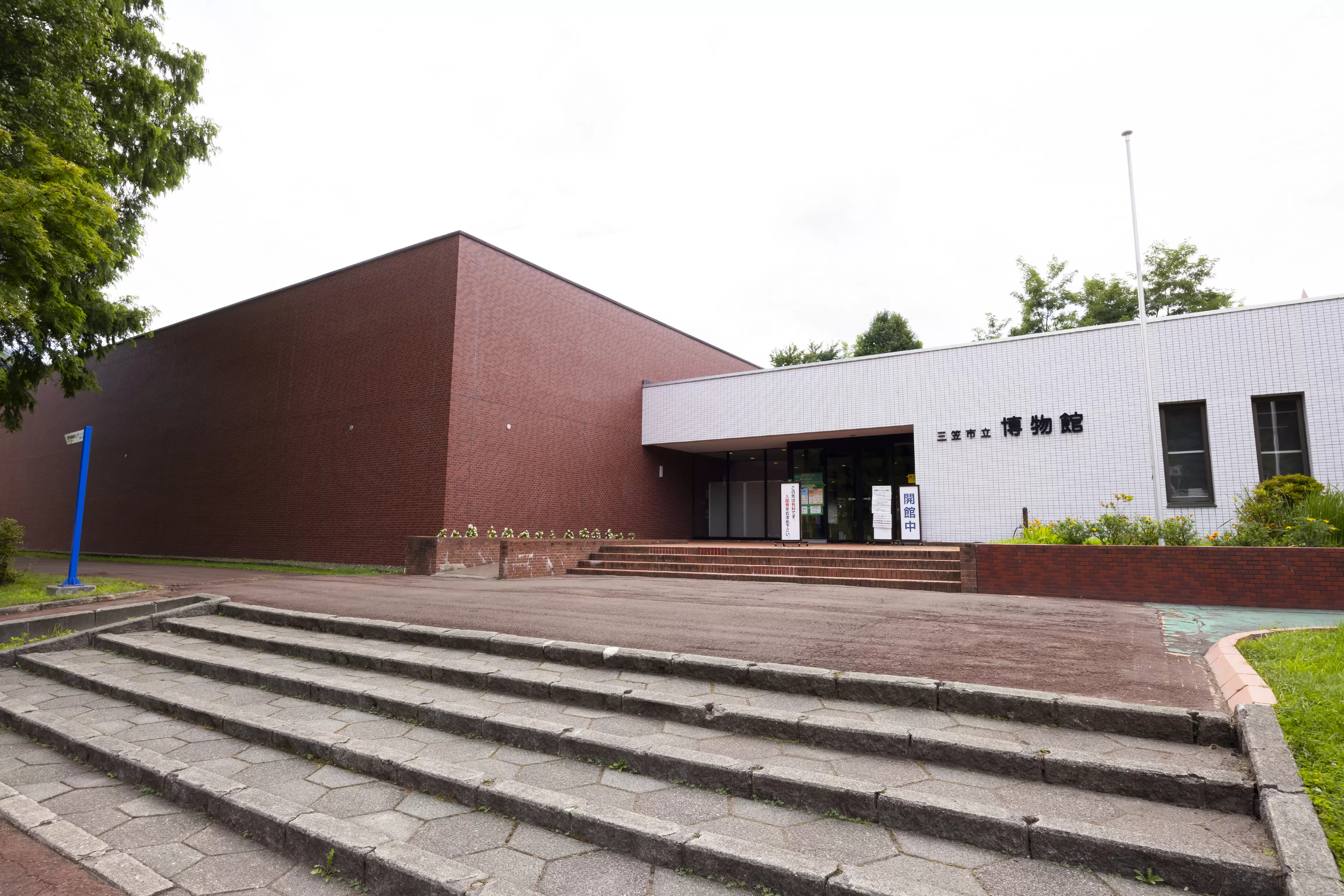
The Mikasa City Museum, which boasts one of the largest ammonite collections in Japan, is a must-visit spot for those visiting on a day trip. There are about 3,000 materials, including exhibitions regarding the city's history, approximately 600 ammonite samples, and a fossil of Ezo Mikasa-ryu (an ancient reptile), which is designated by the Japanese government as a natural monument.
Mikasa City is certified by the Japanese Geoparks Network. The city is well-known as the spot to experience a 100 million years of time in strata, from the Cretaceous Period (about 100 million years ago) to the modern, coal-mining days.
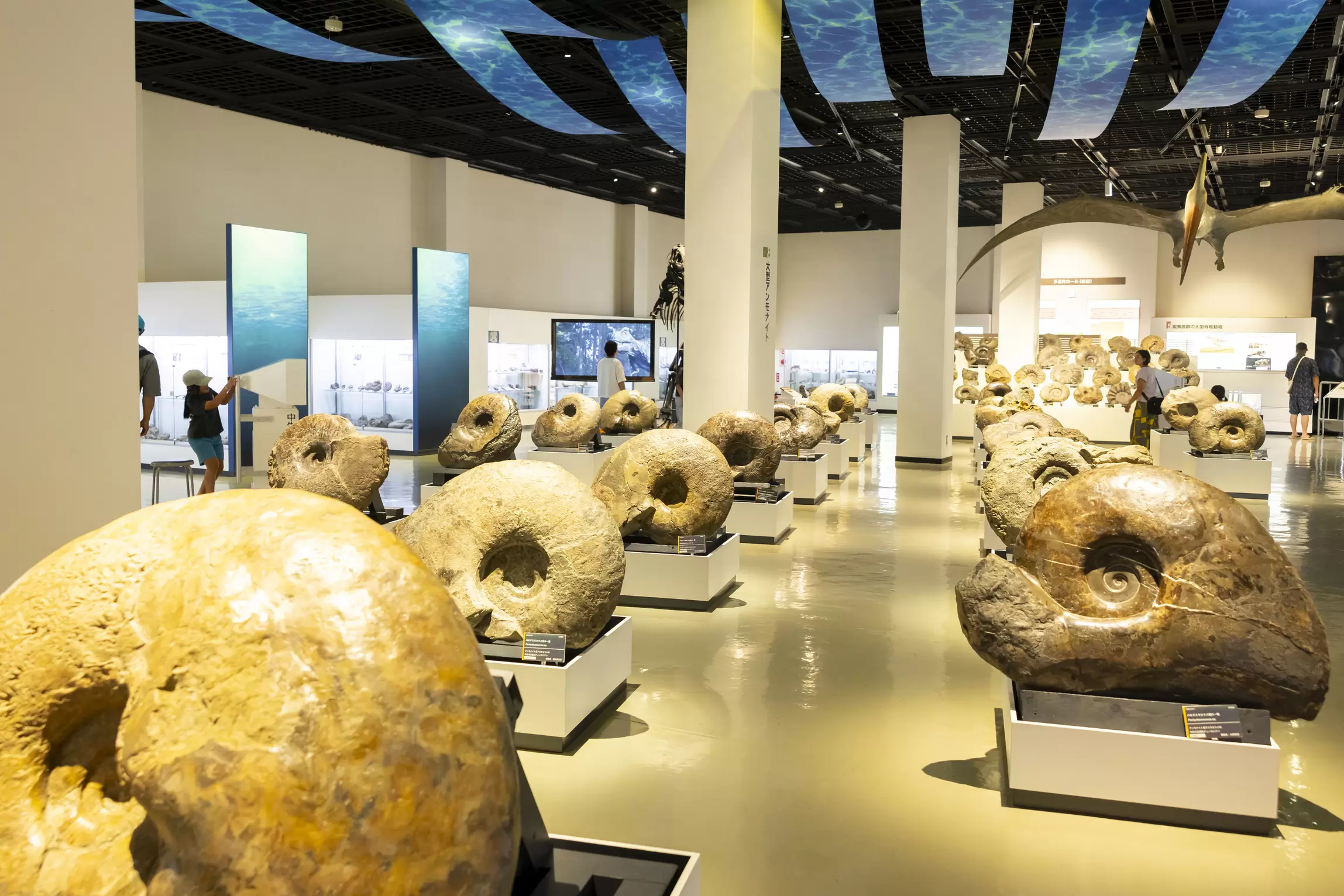
Stratum is crucial to any discussion of Mikasa. The ammonites, which used to swim in the sea, can be found from the 100 million years old stratum, and coal was mined from the 50 million years old stratum.
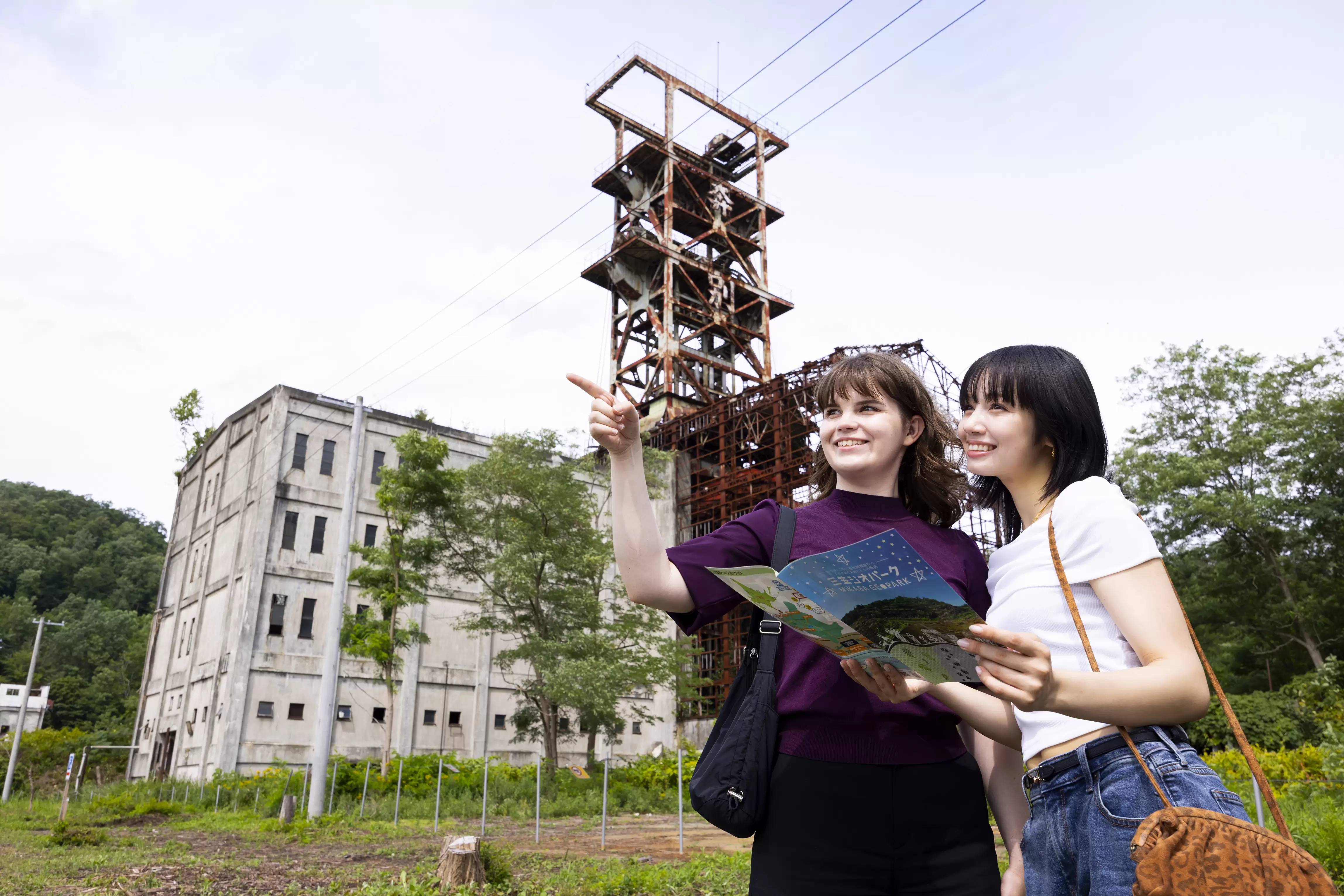
Step outside the museum and visitors can see actual strata, along with the former Ponbetsu Coal Mine. They can also experience a time trip to 100 million years ago. Please note that some areas are restricted to the public.
The Bon odori is the legacy of the coal miners, who danced during their short vacation. With the knowledge of the strata from the museum, visitors joining the dance will be able to experience Mikasa's culture even more deeply.
Enjoy the Japanese Summer in Mikasa
A trip to Mikasa offers a history tour of coal mining spanning 110 years, ammonites from 100 million years ago, and unique local cuisines. At the end, visitors can join the Mikasa Hokkai Bon Odori, and enjoy the vibrant atmosphere with the locals that will bring you smiles.
Mikasa, only an hour drive away from Sapporo, can be accessed easily. Take a summer trip to the city this year to enjoy the regional dishes and a Bon odori event accompanied by live music. It will liven both the mind and body.
Sponsored by Mikasa City Board of Education
